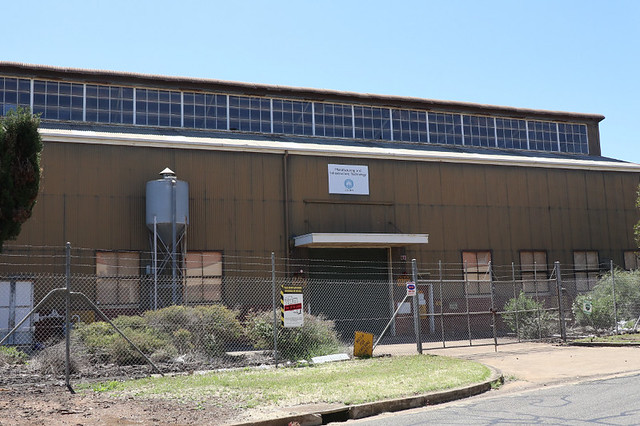
The Ubiquitous Paper Bag
Few things are as ubiquitous and useful as the paper bag. Yet few people have stopped to think about where it came from.
In 1852, Francis Wolle patented the first paper bag-making machine in the United States. Grocers jumped on the innovation, which offered a more practical alternative to envelope-shaped bags that could tear under their weight.
Origin
Few items in the average consumer’s life are as familiar and useful as a paper bag. Every year in the US, people use (and reuse) 10 billion of them. But many of us have never stopped to think about how they got there. They first came into common use in the 19th century, with Francis Wolle’s invention of the first bag-making machine in 1852. But Wolle’s Paper Bag envelope-shaped bags were limited in their usefulness because they weren’t very strong or spacious. It wasn’t until 1871 that Margaret Knight invented a machine that made flat-bottom, boxy paper bags, making her famous as “the mother of the grocery bag.”
Charles Stilwell took Knight’s invention one step further in 1883 by adding accordion pleats to flat-bottom paper sacks. These made the bags stronger, more portable and easier to carry. And Walter Deubener improved on Stillwell’s innovation in 1912 by punching holes in a paper sack and threading cord through them to create handles. It was all these improvements that led to the paper bags we know and love today.
Function
With people’s environmental awareness getting stronger, Paper Bags are gaining more and more popularity. High-grade paper bags are a kind of portable packaging with beautiful appearance and functional characteristics. They are tough, wear resistant, solid and durable, and can be customized to meet customers’ demand.
They are a good alternative to plastic shopping bags because they are environmentally friendly and can be reused. The raw material used to make paperbags – cellulose fiber extracted from wood – comes from sustainably managed European forests. Moreover, the forest industry replants more trees each year than it harvests, and more new forests are planted than those destroyed.
In addition, paper bags can be recycled many times. This reduces the need to extract virgin cellulose from the earth and preserves the remaining forests for other uses. They also emit less sulfur dioxide and nitrogen oxides than plastic bags, which contribute to acid rain. In fact, one study found that a bleached paper bag would have to be used 43 times to neutralize its environmental impact compared with LDPE bags.
Material
The paper bag’s material determines its tensile strength and how much it can carry. It is made from cellulose fibres sourced from sustainable, forestry-based production processes. This natural resource is renewable and grows faster than it is harvested, with more than a third of Europe’s forests growing each year. Sustainable forest management protects ecosystems, creates jobs and recreational areas, provides biodiversity and mitigates climate change.
Kraft paper, for example, is a highly abrasion-resistant and durable material that’s ideal for paper bags. Its thick light brown or yellowish-brown colour comes from softwood sulfate pulp and is also used to make envelopes, portfolios, and medical records bags. It has a high tensile strength and is able to accommodate many different styles of handles.
Paper is also biodegradable and can be reused, unlike plastic bags, which are harmful to the environment. A study by California State University found that one-use plastic bags use more non-renewable energy and fresh water than paper, and can cause pollution by releasing microplastics, eutrophication, and depletion of oxygen. Paper bags, on the other hand, can be recycled many times and still retain their integrity and aesthetics.
Styles
When it comes to paper bags, there are several different styles available. The type of bag that you choose will depend on the type of product and your branding goals. For example, a simple bag without handles is ideal for carrying lightweight products such as candy or cards. It is also a good choice for grocery stores and small businesses.
Another popular option is a bag with a rope handle. These bags are durable and attractive, and can be customised with your own design. There are several types of rope handles, including nylon and cotton. Nylon is typically more expensive than cotton, but it has the best durability.
In addition to the style of the bag, it’s important to consider the weight and capacity. Paper Bag Larger bags require heavier handles to support their contents. The type of handle you choose will also affect how the bag looks and feels. For example, a rope handle will have a more luxurious appearance than a plastic one. You can choose from several handle materials, such as cotton and polyester.
Capacity
The capacity of a paper bag depends on its size and the material it’s made from. The smallest bags have a breaking strain of around 4kg, while the largest can handle ten times that amount. Paper bags are also available with gussets, which allow them to expand for greater capacity.
The long, strong virgin cellulose fibres of paper bags give them high mechanical strength. This means that they can be reused many times before they need to be replaced. The bags are also suitable for printing with high-quality graphics, logos and designs.
Unlike plastic bags, paper bags can be easily recycled. They are also biodegradable and degrade into simpler forms in less time than plastic bags do. This means that they won’t linger on the surface of the earth for 1000 years like plastic bags do, and will instead help to restore soil fertility. They are also an ideal packaging choice for food items such as sugar, salt, flour and spices, which need to be stored in tightly sealed containers to keep them fresh and to avoid the risk of pest infestation.




